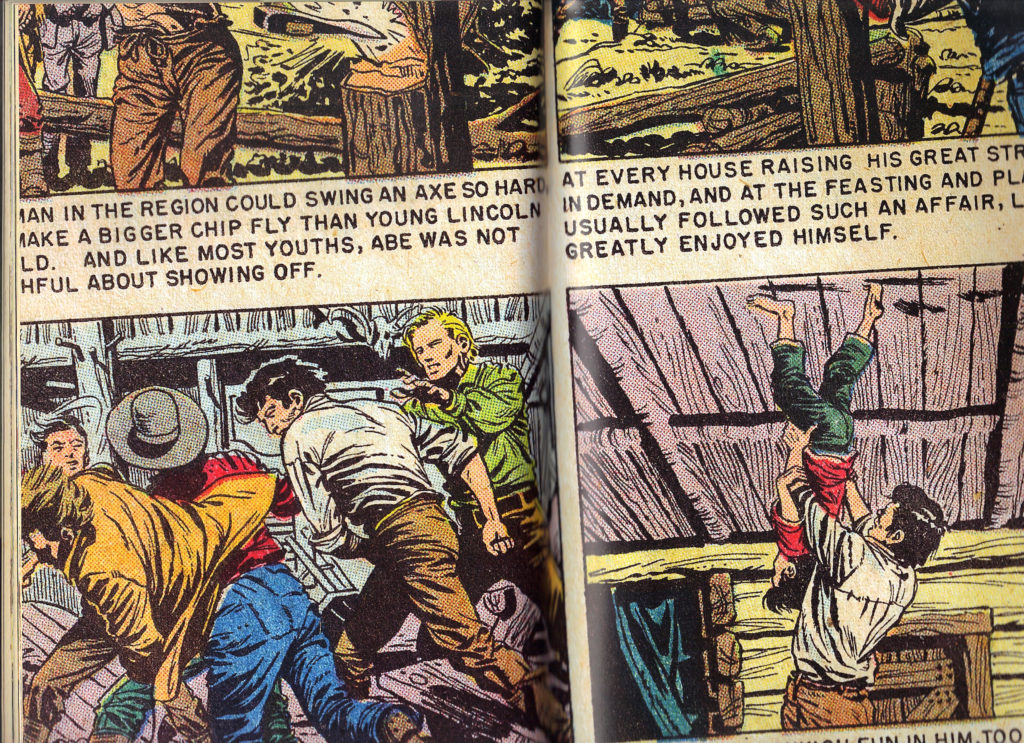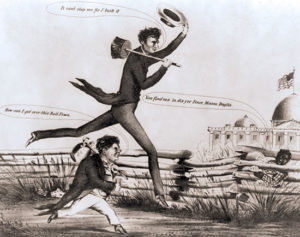 I’ll soon be off chasing Abraham Lincoln. Lincoln is everywhere it seems – Cuba, Norway, Scotland, the UK – but he spent most of his life in Kentucky, Indiana, and Illinois. And that’s where I’m going on my Chasing Abraham Lincoln Tour of 2018.
I’ll soon be off chasing Abraham Lincoln. Lincoln is everywhere it seems – Cuba, Norway, Scotland, the UK – but he spent most of his life in Kentucky, Indiana, and Illinois. And that’s where I’m going on my Chasing Abraham Lincoln Tour of 2018.
Like rock star tours, this one will highlight Lincoln’s greatest hits. I’ll be splitting it into two major parts, though the overall tour consists of many smaller parts as well.
Part 1 this spring takes me to Lincoln’s early life…and the end of it. I’ll be speaking at West Virginia Wesleyan College on my book, Lincoln: The Man Who Saved America. Taking advantage of the location, I’ll then drive down to Harrogate, Tennessee to visit the Abraham Lincoln Library and Museum at Lincoln Memorial University. From there I turn north and head for Lincoln’s Birthplace National Park, Lincoln’s Boyhood Home, and Lincoln Homestead National Park, all in Kentucky. Then I’ll track his family’s move across the Ohio River at Grandview and Rockport, Indiana before heading up to the exhibits at the Indiana State Library in Indianapolis and the documents at the Allen County Public Library in Fort Wayne. This will get me through the major Indiana stops, but not all my stops.

A three hour drive north of Fort Wayne gets me into Michigan and Henry Ford’s famous museum. At Ford’s Greenfield Village I’ll find the original Logan County Courthouse where Lincoln practiced law from 1840-1847. And then there is the end of Lincoln’s life – the original high-backed rocking chair in which Lincoln was sitting when he was tragically struck down by John Wilkes Booth.
While I’m at Greenfield Village I’ll also check out the recreated Menlo Park Laboratory of Thomas Edison, star of my second book, Edison: The Inventor of the Modern World. The lab site includes Edison’s original glass house, carbon shed, and even truckloads of Menlo Park (now Edison), New Jersey dirt. Another part of the Village has the Edison Illuminating Company’s Station A, where a young Henry Ford worked as a steam engineer in the 1890s.
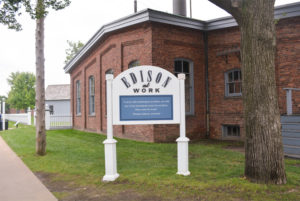
From Michigan I’ll pass through Dayton and Cincinnati, Ohio to gawk at some famous Lincoln statues before working my way towards home
Keep in mind this is just Part 1 of my Chasing Abraham Lincoln Tour. Part 2 will take me this summer into Illinois to follow Lincoln and Stephen A. Douglas around their famous debate sites, plus check out the remnant of the Illinois and Michigan Canal that Lincoln helped create. Of course, these 2018 trips come after my 2016 trip Visiting Abraham Lincoln’s Illinois, which I documented in Part I and Part II and this special post on How Bloomington, IL made Lincoln Great (click on the links).
Eventually I’ll have covered all of Abraham Lincoln’s life (I’ve already lived for three months in Edinburgh, Scotland, which boasts the only Lincoln and Civil War statue outside the U.S.). I’ve also hit most of the Washington, D.C. area sites and was recently down in Newport News and City Point. A bit inefficient to spread this over the years, but it’s slowly coming together. I’ll have plenty of photos and stories from the 2018 tours so keep checking back here for more info.
David J. Kent is the author of Lincoln: The Man Who Saved America, in Barnes and Noble stores now. His previous books include Tesla: The Wizard of Electricity (2013) and Edison: The Inventor of the Modern World (2016) and two e-books: Nikola Tesla: Renewable Energy Ahead of Its Time and Abraham Lincoln and Nikola Tesla: Connected by Fate.
Check out my Goodreads author page. While you’re at it, “Like” my Facebook author page for more updates!



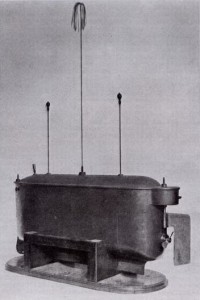 People today are fascinated by artificial intelligence and robotics. But did you know that Nikola Tesla was the first to demonstrate robotics in 1898? He enthralled onlookers with his robot boat in New York City long before Isaac Asimov made robots chic.
People today are fascinated by artificial intelligence and robotics. But did you know that Nikola Tesla was the first to demonstrate robotics in 1898? He enthralled onlookers with his robot boat in New York City long before Isaac Asimov made robots chic.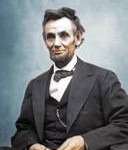 The Abraham Lincoln Institute holds an annual symposium, the last several years of which were held in historic Ford’s Theatre in Washington, D.C. Standing on-stage under the theatre box where Lincoln was assassinated creates a wave of emotions, from intimidating, to sadness, to inspiration.
The Abraham Lincoln Institute holds an annual symposium, the last several years of which were held in historic Ford’s Theatre in Washington, D.C. Standing on-stage under the theatre box where Lincoln was assassinated creates a wave of emotions, from intimidating, to sadness, to inspiration. The popular
The popular 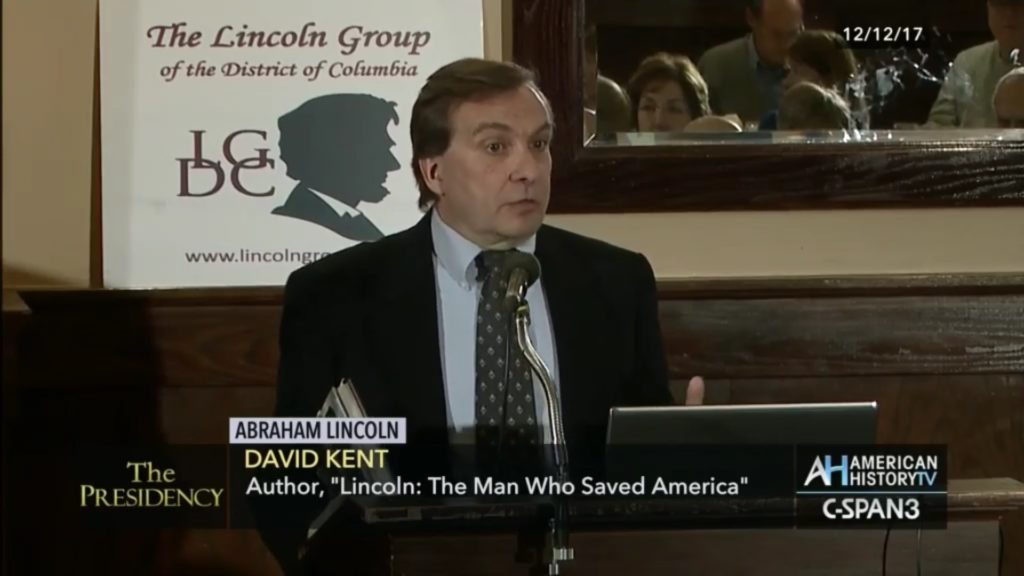
 I’m not prone to overthinking things. Okay, I am prone to overthinking things. Or am I? Yes, I am. I think. In any case, lately I’ve been ruminating over the role of women in society.
I’m not prone to overthinking things. Okay, I am prone to overthinking things. Or am I? Yes, I am. I think. In any case, lately I’ve been ruminating over the role of women in society.